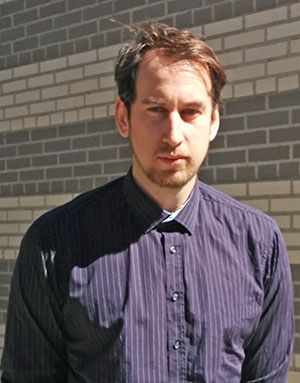Intel awards KTH research with a HARP system
Artur Podobas, PhD student at KTH has been awarded by Intel with a HARP (Heterogenous Architecture Research Platform) system that pairs a 12-core general-purpose Intel processor together with a powerful Stratix V FPGA for his research work with a tool that takes the source code from an application and automatically generates a highly specialized system for that application.

Congratulations Artur! Can you please tell us about your research?
– Today, software programmers are parallelizing their applications to make them run faster. Often a parallel programming model such as OpenMP is used to simplify programmer's life in parallelizing their applications.
Unfortunately, processors today are general-purpose, meaning that they are designed such that they perform only reasonably well with most applications.
– My research enables programmers to automatically generate specialized processors that are tailored to each application. To be more specific, we have created a tool that takes an application's source code and automatically generate a highly specialized system for that application. Our tool is called BLYSK and consists of a compiler and a very fast run-time system.
Can you give us an example about what your tool can be used for.
– Imagine that you have an application that can utilize (can scale to) 400 cores. Current general-purpose system only contains around 8 cores, which is far less than 400. With our research, you can have a specialized 400-core system up-and-running on an FPGA (Field-Programmable Gate Array) in matter of hours, and fully take advantage of your application's parallelism.
Tell us about the award from Intel.
– We will receive a HARP system – a system that pairs a 12-core general-purpose Intel processor together with a powerful Stratix V FPGA.
How will you use the HARP system?
– We plan to continue our research in OpenMP-driven high-level synthesis, with focus on customizing the memory hierarchy that will be automatically generated, and on the interplay between the run-time system and the generated system.
Why did Intel choose you for this award?
– I believe that our proposed project is well aligned with the objectives of the HARP program. My work covers three of their important topic of interest: Compilation, Language and library support, and application tuning.
How was the competition for the award?
– The competition for the Intel Altera HARP system was fierce and only 20 or so systems have been built. There were many top-level universities that applied and our proposal was one of the few that got accepted.
How does it feel to receive this prize?
– It feels pretty decent. I am happy that my vision of bridging the gap between parallel programming models and hardware design is encouraged and shared by people over at Intel. In general I am happy to have been blessed with this opportunity. And with Intel recently acquiring Altera we are likely to see more of these systems in the future. Exciting research lies ahead of us, and I am happy to be part of it.

